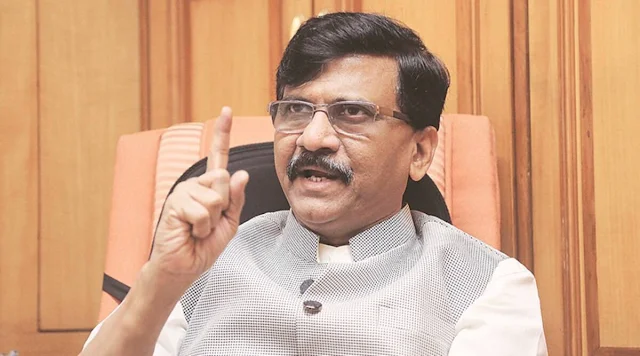Floating artificial leaf converts energy from sunlight into fuel :
A solar fuel cell that produces carbon monoxide and hydrogen is light enough to float on water, which could help address the shortage of land available for solar projects
Scientists have developed floating ‘artificial leaves’ that generate clean fuels from sunlight and water. They could eventually operate on a large scale at sea.
 |
| Artificial solar leaf floating on river cam in Cambridge |
 |
| Artificial solar leaf |
 |
| Left Dr Virgil Andrei Right The artificial leaf. |
The ultra-thin, flexible devices, which take their inspiration from photosynthesis – the process by which plants convert sunlight into food – were designed by researchers from the University of Cambridge. Since the low-cost, autonomous devices are light enough to float, they could be used to generate a sustainable alternative to gasoline without taking up space on land. Outdoor tests of the lightweight leaves on the River Cam showed that they can convert sunlight into fuels as efficiently as plant leaves. River Cam is the main river flowing through Cambridge in eastern England, and the testing occurred near iconic Cambridge sites including the Bridge of Sighs, the Wren Library, and King’s College Chapel. Researchers from the University of Cambridge designed ultra-thin, flexible devices, which take their inspiration from photosynthesis – the process by which plants convert sunlight into food. Since the low-cost, autonomous devices are light enough to float, they could be used to generate a sustainable alternative to gasoline without taking up space on land.
This is the first time that clean fuel has been generated on water. If it were scaled up, the artificial leaves could be used on polluted waterways, in ports, or even at sea, and could help reduce the global shipping industry’s reliance on fossil fuels. The results are reported today (August 17, 2022) in the journal Nature.
Renewable energy technologies, such as wind and solar, have become significantly cheaper and more available in recent years. However, for industries such as shipping, decarbonization is a much taller order. Around 80% of global trade is transported by cargo vessels powered by fossil fuels, yet the sector has received remarkably little attention in discussions related to the climate crisis. For several years, Professor Erwin Reisner’s research group in Cambridge has been working to address this problem by developing sustainable solutions to gasoline that are based on the principles of photosynthesis. In 2019, they developed an artificial leaf, which makes syngas from sunlight, carbon dioxide, and water. Syngas is a key intermediate in the production of many chemicals and pharmaceuticals.The earlier prototype produced fuel by combining two light absorbers with suitable catalysts. However, it incorporated thick glass substrates and moisture-protective coatings, which made the device bulky.
The results are reported in the journal Nature.
Can lower the cost of sustainable fuel production
For several years, Professor Erwin Reisner's research group in Cambridge has been working to develop sustainable solutions to petrol based on the principle of photosynthesis. But existing technology has been either inefficient or so heavy that it had to be confined to land, where space was an issue.
To illustrate, in 2019, researchers developed an artificial leaf that makes syngas from sunlight, carbon dioxide, and water. Though it generated fuel by combining two light absorbers with suitable catalysts, it incorporated thick glass substrates and moisture-protective coatings, resulting in a bulky device.
"Artificial leaves could substantially lower the cost of sustainable fuel production, but since they’re both heavy and fragile, they’re difficult to produce at scale and transport," Virgil Andrei from Cambridge’s Yusuf Hamied Department of Chemistry, the paper’s co-lead author, said in a statement.
A new understanding of human origins in Africa :
 |
a, Selected populations from the 1000 Genomes Project and the African
Diversity Reference Panel illustrate diversity from western, eastern and
southern Africa. We chose representative ethnic groups from each region (bold
labels) to build parameterized models, including the newly genetically
sequenced Nama populations from South Africa, Mende from Sierra Leone, Gumuz,
Oromo and Amhara from Ethiopia, British individuals and a Neanderthal from
Vindija Cave, Croatia. b,c, Principal component analysis highlights the range
of genetic divergence anchored by western African, Nama, Gumuz and British
individuals between principal components (PC) 1 and 2 (b), and 1 and 3 (c).
Percentages show variance explained by each principal component. Colours
represent the groups shown in bold in a. d, ADMIXTURE analysis using K = 4
principal components reveals signatures of recent gene flow in Africa that
reflect colonial-period migration into the Nama, back-to-Africa gene flow among
some Ethiopians, and Khoe-San admixture in the Zulu population. Credit: Nature
(2023). DOI: 10.1038/s41586-023-06055-y
There is broad agreement that Homo sapiens originated in Africa. But there remain many uncertainties and competing theories about where, when, and how.
In a paper published today in Nature, an international research team led by
McGill University and the University of California-Davis suggest that, based on
contemporary genomic evidence from across the continent, there were humans living
in different regions of Africa, migrating from one region to another and mixing
with one another over a period of hundreds of thousands of years. This view
runs counter to some of the dominant theories about human origins in Africa.
Competing theories about human origins in Africa
One theory holds that, about 150,000 years ago, there was a single central
ancestral population in Africa from which other populations diverged. Another
suggests that this central ancestral population was the result of the mixing of
modern humans with a Neanderthal-like hominins (human-like beings), resulting
in a leap forward in human evolution, as has been suggested took place in
Eurasia.
"At different times, people who embraced the classic model of a single
origin for Homo sapiens suggested that humans first emerged in either East or
Southern Africa," says Brenna Henn, a population geneticist in the
Department of Anthropology and in the Genome Center at the University of
California, Davis and co-lead author of the research.
"But it has been difficult to reconcile these theories with the
limited fossil and archaeological records of human occupation from sites as far
afield as Morocco, Ethiopia, and South Africa which show that Homo sapiens were
to be found living across the continent as far back as at least 300,000 years
ago."
So, the research team took a different approach.
Contemporary genomic evidence tells a different story
In the first systematic test of these competing anthropological models
against genetic data, the team worked backwards from contemporary genomic
material of 290 individuals from four geographically and genetically diverse
African groups to trace the similarities and differences between the
populations over the past million years and gain insight into the genetic
interconnections and human evolution across the continent.
The groups were the Nama (Khoe-San from South Africa); the Mende (from
Sierra Leone); the Gumuz (recent descendants of a hunter-gatherer group from
Ethiopia); and the Amhara and Oromo (agriculturalists from eastern Africa). The
researchers also included some Eurasian genetic material to include the traces
of colonial incursions and mixing Africa.
"We used a new algorithm to rapidly test hundreds of possible
scenarios. Those with gene flow back and forth between populations in various
parts of the continent over the course of hundreds of thousands of years
provided a much better explanation of the genetic variation we see today,"
adds Simon Gravel, Associate Professor in the Department of Human Genetics at
McGill University, and co-senior author on the paper.
"We wrote this algorithm to understand how genetic disease risk varies
across populations, and it led us to this deep dive into human origins. It's
been really fun to tie applied and fundamental research together in this
way."
Astronomers discover an unusually low-density super-Earth:
 |
| New class of inflated super-Earth with unusual low density |
 |
| New-low-density-super-earth-exoplanet-discovered-by-TESS-696x445 |
| TESS target pixel file of TOI-244 |
An international team of astronomers reports the detection of a new "super-Earth" exoplanet using NASA's Transiting Exoplanet Survey Satellite (TESS). The newfound alien world, designated TOI-244 b, turns out to have an unusually low density. The finding was reported in a paper published May 8 on the arXiv preprint server.
TESS is conducting a survey of about 200,000 of the brightest stars near the sun with the aim of searching for transiting exoplanets. So far, it has identified nearly 6,600 candidate exoplanets (TESS Objects of Interest, or TOI), of which 331 have been confirmed so far.
Now, a group of astronomers led by Amadeo Castro-González of the Spanish Astrobiology Center in Madrid, Spain, has confirmed another TOI monitored by TESS. They report that a transit signal was detected in the light curve of TOI-244 (also known as GJ 1018)—a nearby bright, early type M-dwarf star of spectral type M2.5 V, nearly half the size and mass of the sun. The planetary nature of this signal was confirmed by radial velocity measurements conducted with the ESPRESSO spectrograph mounted on the European Southern Observatory's Very Large Telescope (VLT) in Chile.
"Based on the transit signal detected from TESS data, we carried out an intensive radial velocity campaign with ESPRESSO in order to confirm its planetary nature, obtain a precise mass measurement, as well as to search for additional planets," the researchers wrote.
According to the study, TOI-244 b has a radius of 1.52 Earth radii, while its mass is about 2.68 Earth masses, yielding a density at a level of 4.2 g/cm3. The planet orbits its host every 7.4 days, at a distance of about 0.056 AU from it, and its equilibrium temperature is estimated to be some 458 K.
Based on the findings, Castro-González's team classified TOI-244 b as a "super-Earth." Such planets are more massive than Earth but do not exceed the mass of Neptune. Although the term "super-Earth" refers only to the mass of the planet, it is also used by astronomers to describe planets bigger than Earth but smaller than the so-called "mini-Neptunes" (with radiuses between two to four Earth radii).
The results suggest that TOI-244 b is composed of iron and silicates in a proportion similar to that of the Earth. However, the planet is less dense than the majority of super-Earths of its size. The density of TOI-244 b is also below what would be expected for an Earth-like composition.
The researchers assume that the low density of TOI-244 b is related to the presence of a significant amount of volatile elements.
"In that sense, we find that atmospheric loss processes may have been very efficient to remove a potential primordial hydrogen envelope, but high mean molecular weight volatiles such as water could have been retained," the authors of the paper concluded.
The astronomers added that TOI-244 b is an excellent target for future atmospheric studies, due to its unusual properties and the likely presence of an extended atmosphere.
Deficiency causes rare tropical plant to develop appetite for meat
 |
| A carnivorous leaf of Triphyophyllum peltatum with glands excreting a sticky liquid to capture insect prey |
 |
| When Triphyophyllum peltatum enters the liana stage, the plant forms leaves with two hooks at the tip as a climbing support. |
Under certain circumstances, a rare tropical plant develops into a carnivore. A research team from the universities of Hannover and Würzburg has now deciphered the mechanism responsible for this. Triphyophyllum peltatum is a unique plant. Native to the tropics of West Africa, the liana species is of great interest for medical and pharmaceutical research due to its constituents: In the laboratory, these show promising medically useful activities against pancreatic cancer and leukemia cells, among others, as well as against the pathogens that cause malaria and other diseases.
However, the plant species is also interesting from a botanical perspective: Triphyophyllum peltatum is the only known plant in the world that can become a carnivore under certain circumstances. Its menu then includes small insects, which it captures with the help of adhesive traps in the form of secretion drops and digests with lytic enzymes synthesized.
A high flexibility can be observed in the leaves of the plant, which develop three different types depending on the stage of development. While in the juvenile phase simple leaves are initially formed, later so-called "trap leaves" can be formed, which carry a large number of adhesive traps. When these trap leaves have served their purpose, the plant either forms normal leaves again or—if the plant has entered the liana stage—leaves with two hooks at the tip as a climbing support. As far as the expression of leaf identity is concerned, Triphyophyllum peltatum shows a high degree of flexibility: the developmental stages can vary in length, and the carnivorous stage can be omitted completely or made up for at a later stage. Thus, the plant seems to adapt to the prevailing conditions of its habitat.
The trigger that turns the plant into a carnivore was previously unknown. One reason for this was the fact that Triphyophyllum peltatum was considered very difficult to cultivate and therefore the formation of trap leaves was difficult to study experimentally. This problem has now been solved by scientists at Leibniz Universität Hannover (LUH) and Julius-Maximilians-Universität Würzburg (JMU).
They first succeeded in cultivating the Triphyophyllum peltatum in the greenhouse of the Würzburg Botanical Garden. In Hannover conditions were developed to propagate the plants in large numbers under in vitro conditions, i.e. in culture vessels on well-defined nutrient media.
Professor Traud Winkelmann from the Institute of Horticultural Production Systems at Leibniz University Hannover and her colleague Anne Herwig from the Institute of Soil Science at LUH were involved, as well as Würzburg professors Gerhard Bringmann (Institute of Organic Chemistry) and Rainer Hedrich (Julius-von-Sachs-Institute of Biosciences).
Whale sharks found to slow down to allow researchers to scrape off parasites:
 |
| WHALE-SHARK |
A trio of marine biologists from The University of Western Australia has found that some whale sharks will slow their swimming to allow researchers to scrape collections of copepods from sensitive areas. In their study, reported in the journal Fishes, Brendon Osorio, Grzegorz Skrzypek and Mark Meekan noticed that in recent years, whale sharks have become more cooperative as researchers attempt to collect parasite samples. Marine scientists have been collecting skin and/or parasite samples from whale sharks for many years. The sharks represent the largest known living fish and the largest living nonmammalian vertebrate. They are sharks, not whales, and got their name due to their large size—the largest confirmed size is 18.8 meters in length. The sharks are filter feeders and thus pose little risk of biting. Their large size, however, poses a risk of injury to other creatures that venture too close. Scientists study them to learn more about them and the environment in which they live—the open sea.
The researchers have been studying the sharks for nearly a decade, collecting samples of skin and tissue samples to learn more about what the sharks might be eating and how deep they dive. In more recent years, they found they could get roughly the same data by collecting copepods (a type of small parasitic crustacean) that adhere to the skin of the sharks. They also noted that suckerfish, which cling to the sharks, do so as a means to eat the copepods—but tend only to clear copepods on flat, easy-to-reach parts of the skin. The copepods clinging to areas around the mouth and fins are left intact. For that reason, the researchers began targeting those areas using a small plastic knife to remove and bag the parasites.
As time passed, the researchers gathered samples from the same shark more than once, and the sharks seemed to remember the encounters fondly—they began slowing their swimming rate when the researchers approached, and in some cases, stopped swimming altogether, making it easier for the researchers to do their work. They suggest that removal of the parasites reduces irritation and makes swimming more efficient.
 |
| Pilot has accused the Gehlot government of dragging its feet over corruption charges going back to Raje’s tenures as CM and hinted that the Congress CM was hand-in-glove with his BJP predecessor. |
 |
| The PM’s move to shift Rijiju from the high-profile law ministry to the low-key earth sciences ministry came as a shock to many in the BJP circles |
 |
| Union Minister for Law and Justice Kiren Rijiju at Parliament House complex, in New Delhi. Rijiju was on Thursday, May 18, 2023, shifted from the law ministry and assigned Ministry of Earth Sciences |
 |
| The Centre has told the Kuki legislators that its “first priority” is to restore peace and normalcy in Manipur and that other demands or questions would be looked into later. |
Daniil Medvedev making progress on clay, to face Stefanos Tsitsipas in Italian Open semifinals :

Russia's Daniil Medvedev returns the ball to Germany's Yannick Hanfmann during their quarter final match at the Italian Open.
Dope offender Dipa Karmakar’s return to training camp as per WADA rules, says gymnastics federation
 |
| Dipa Karmakar first came to prominence at the 2014 Commonwealth Games, where her high-scoring Produnova vault earned her a bronze |
Regulations allow Dipa Karmakar, who finished fourth at the Olympics, to join two months before suspension ends. The Gymnastics Federation of India (GFI) insists it has stuck to rules while naming Dipa Karmakar for a training camp, and that the athlete currently under suspension for a doping violation will return to international competition only after serving out her ban.
Jump’s loss is hurdles gain as Yashas wins gold and bags Asian Championships ticket
 |
| At finals in Ranchi, Yashas clocked a new personal best of 49.40s to outrun favourites Santosh and MP Jabir |
Yashas, who switched disciplines just last year, clocked a new personal best of 49.40s to outrun favourites Santosh and MP Jabir. Among the 400m hurdles finalists at the Federation Cup, Karnataka’s Yashas P had a special distinction. He was the only participant to have a national-level jumps medal. The junior Federation Cup high jump medallist switched to the more gruelling 400m just last year at his army coach’s insistence.
‘Life has been very tough’: Former BCCI Chief Selector Chetan Sharma’s tweet months after sting operation ended his stint:
In the video that brought his BCCI stint to an end, Sharma can be heard purportedly claiming that Hardik Pandya, who has been captaining India in the T20Is since the T20 World Cup, was a frequent visitor at his house. It took mere days for Chetan Sharma to step down from his role as BCCI Chief Selector back in February this year after a sting operation saw him purportedly claim that Hardik Pandya, who has been captaining India in the T20Is since the T20 World Cup, was a frequent visitor at his house. In the video, he’d further claim that the Indian players had been taking injections to stay fit.
Archery World Cup: India crash out of recurve team events:
 |
| The eighth seeded Indian men's recurve team began its campaign with a hard-fought 5-3 win over Chinese Taipe |
The eighth seeded Indian men's recurve team began its campaign with a hard-fought 5-3 (57-57, 56-58, 57-56, 58-51) win over Chinese Taipei. It was a familiar script for Indian archers as they were eliminated by heavyweights Korea in the quarterfinals of the men’s recurve team event in the World Cup Stage 1 here on Thursday.

Author : Siddhartha Mukherjee is a cancer physician and researcher. He is an assistant professor of medicine at Columbia University and a staff cancer physician at the CU/NYU Presbytarian Hospital. A former Rhodes scholar, he graduated from Stanford University, University of Oxford (where he received a PhD studying cancer-causing viruses) and from Harvard Medical School. His laboratory focuses on discovering new cancer drugs using innovative biological methods. Mukherjee trained in cancer medicine at the Dana Farber Cancer Institute of Harvard Medical School and was on the staff at the Massachusetts General Hospital. He has published articles and commentary in such journals as Nature, New England Journal of Medicine, Neuron and the Journal of Clinical Investigation and in publications such as the New York Times and the New Republic. His work was nominated for Best American Science Writing, 2000 (edited by James Gleick). He lives in Boston and New York with his wife, Sarah Sze, an artist, and with his daughter, Leela.









































 Online Movies
Online Movies
No comments:
Post a Comment